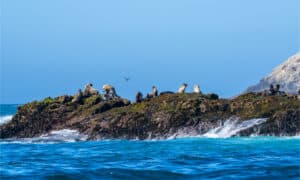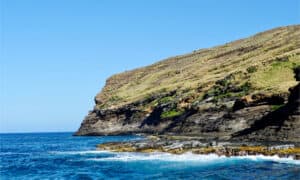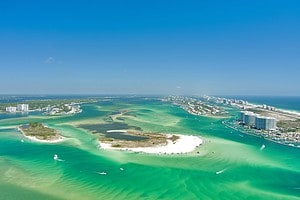The Balkan countries, often simply called ‘The Balkans’, are countries that are at least partially located on the Balkan Peninsula. This parcel of land in southeastern Europe has the Sava and Danube Rivers as its northern border. To the west, it is bordered by the Adriatic Sea, and to the east by the Black Sea. Geographically, continental Greece and parts of Turkey are included, but politically, Greece and Turkey are not included as Balkan countries. Here, we take a closer look at the 11 Balkan countries in 2024.
Albania

Around three million people live in Albania.
©Andrii Lutsyk/Shutterstock.com
Also called the Republic of Albania, the country has a population of nearly three million, with half of the population living in cities, including Tirana, the capital. Albania is located to the west of the Balkan peninsula. Its geography varies from snow-capped mountains in the Albanian Alps to warm Ionian coastal regions. Albania is a member of NATO and has applied for membership in the European Union. Agriculture is crucial for the Albanian economy, and the country is one of the world’s most significant producers of rosemary. It is also an important mineral producer. The vast majority of the population speaks Albanian, but the country is religiously diverse, with no official religion.
Bosnia and Herzegovina
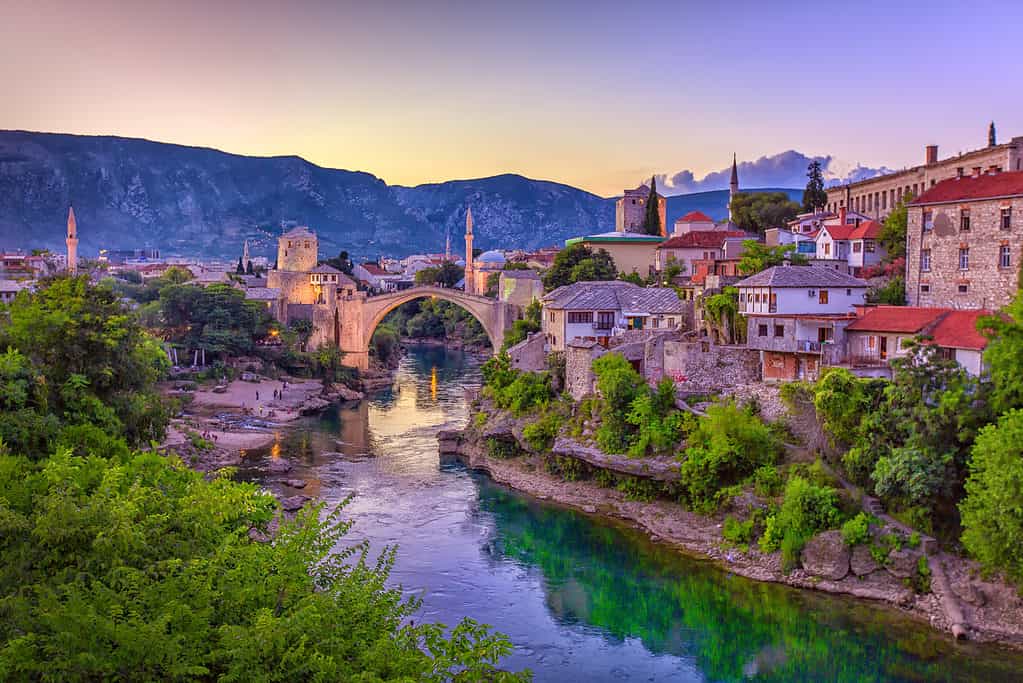
Half of Bosnia and Herzegovina is covered in forest.
©iStock.com/Greg Sullavan
Also sometimes referred to as Bosnia-Herzegovina, this country is surrounded by Serbia, Montenegro, and Croatia. It also has a 12-mile-long Adriatic Sea coast. Until the Bosnian War (1992-1995), it was part of the Socialist Federal Republic of Yugoslavia. This is a mountainous country, and nearly half of it is forested. The capital, Sarajevo, is the largest city where around 344,000 of the country’s estimated 3.5 million population reside. Three ethnic groups are dominant, namely the Bosniaks, Serbs, and Croats, and there is no official state language. It is also a religiously diverse country, with around half of the population being Muslim. Tourism is becoming increasingly important to the country’s economy (which suffered during the war), and the country offers city breaks, ecotourism, and ski holidays.
Bulgaria

The population of Bulgaria is 6.5 million.
©iStock.com/hale irwin
West of the Black Sea and south of the famous Danube River, you will find the country of Bulgaria. It covers 42,855 square miles and has five neighboring countries plus a Black Sea coast. The Balkan Mountains run through the country from west to east and include Rila – the highest mountain range in southeast Europe. Plains make up about a third of the country, including the Danubian Plain. This country is home to around 6.5 million people who live in provinces, taking their names from their respective capital cities, although the country’s capital is Sofia. It is now an industrial economy with significant scientific and technological research sectors. Bulgarian is the only official language, and it is a secular state, although Eastern Orthodox Christianity is the predominant religion.
Croatia
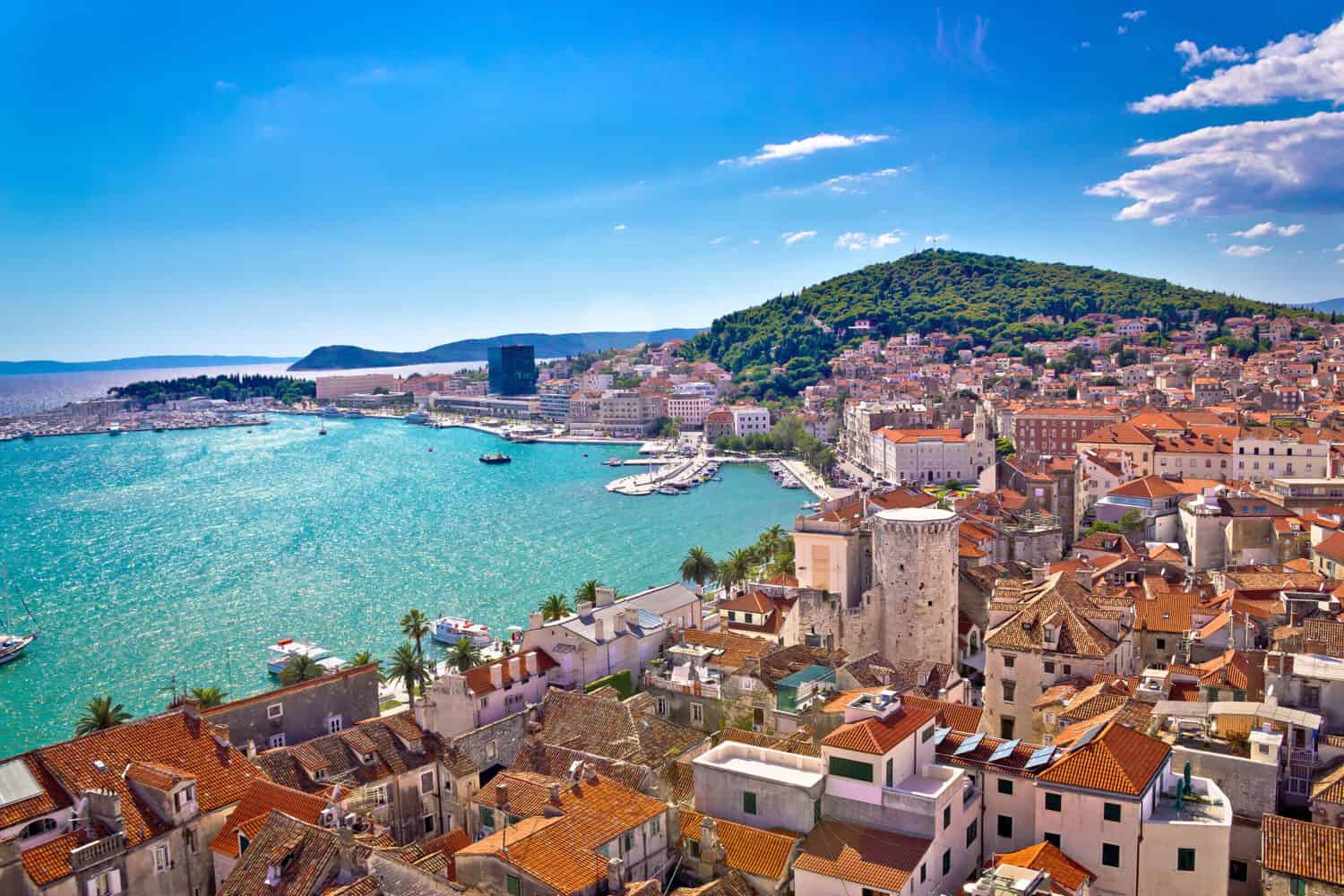
There is a booming tourist industry in Croatia.
©xbrchx/Shutterstock.com
Located on the western edge of the Balkan peninsula, Croatia has a long Adriatic Sea coastline. Its official name is the Republic of Croatia, and its capital is Zagreb. In total, the country covers 21,851 square miles and has a population of around 3.9 million. This country is a member of both NATO and the European Union. Its economy is dominated by the service, industrial, and agricultural sectors, and it has a booming tourism industry. The territory includes over a thousand islands and islets, of which only 48 are permanently inhabited. While Croatian is the official language, there are multiple other minority languages in use, including Czech and Hungarian. The country represents a blend of Eastern and Western cultural influences, which are reflected in its art, music, and cuisine.
Kosovo
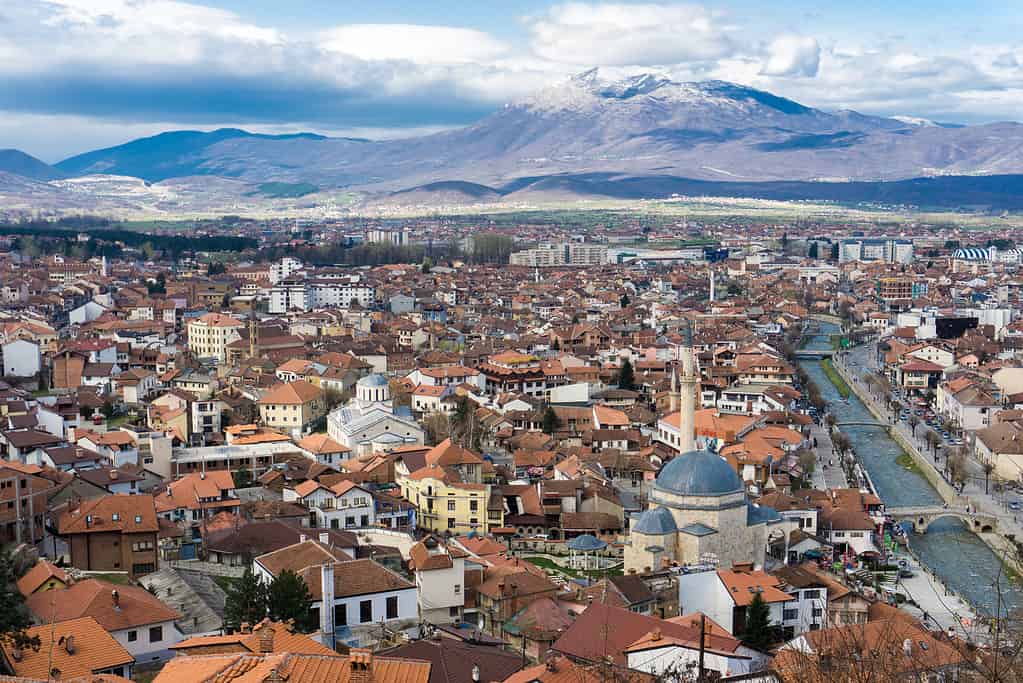
The official languages of Kosovo are Albanian and Serbian.
©Scott Biales/iStock via Getty Images
The Republic of Kosovo is a landlocked Balkan country dominated by vast plains and fields. The largest city is the capital Pristina. It gained its independence from Serbia in 2008. Even though it is considered a developing country, it has solid economic growth and an economy dominated by the service sector. It covers 10,887 square miles with borders dominated by mountains and high terrain. The population is approximately 1.7 million, made up predominantly of Albanians, and the official languages are Albanian and Serbian
Moldova
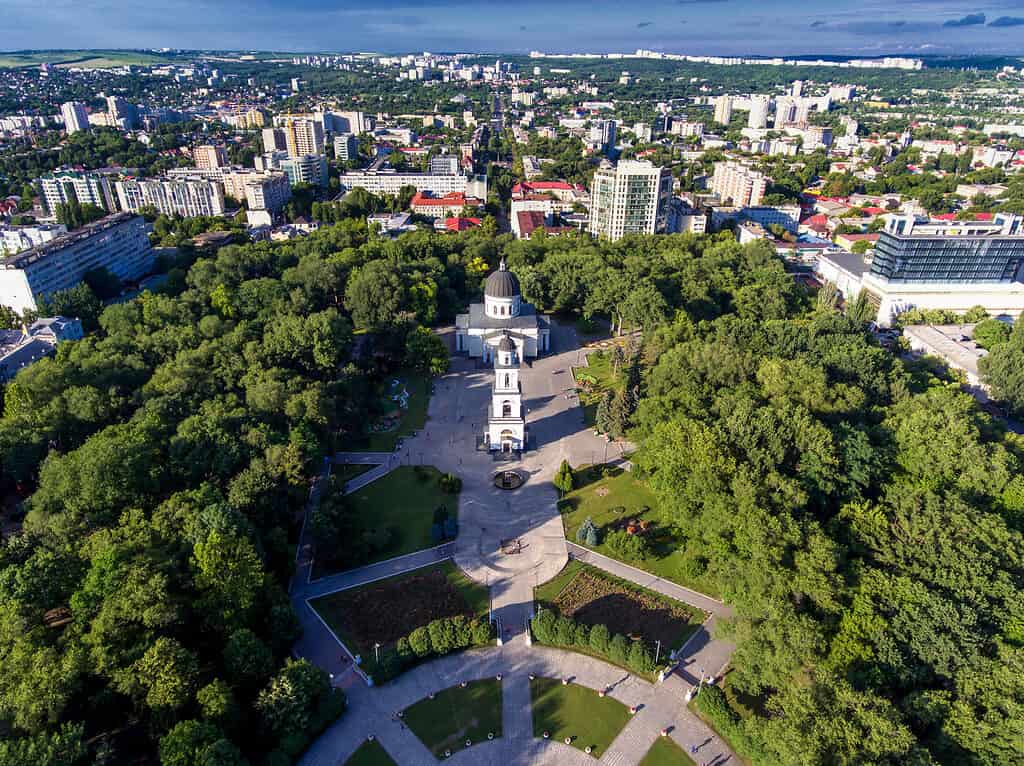
Chisinau is the capital of Moldova.
©Calin Stan/Shutterstock.com
The Republic of Moldova is a landlocked country in the northeastern corner of the Balkans. It spans 13,067 square miles and has a population of around 2.5 million people. The country’s capital, Chisinau, is also the largest city. Around a third of the population lives in its metro area. It is the second poorest country in Europe, with a developing market economy that relies on exports of agriculture, apparel, sports equipment, and wine. Most of the country is hilly, but elevations do not exceed 1,411 feet. The only official language here is Romanian, and Eastern Orthodox Christianity dominates religion.
Montenegro
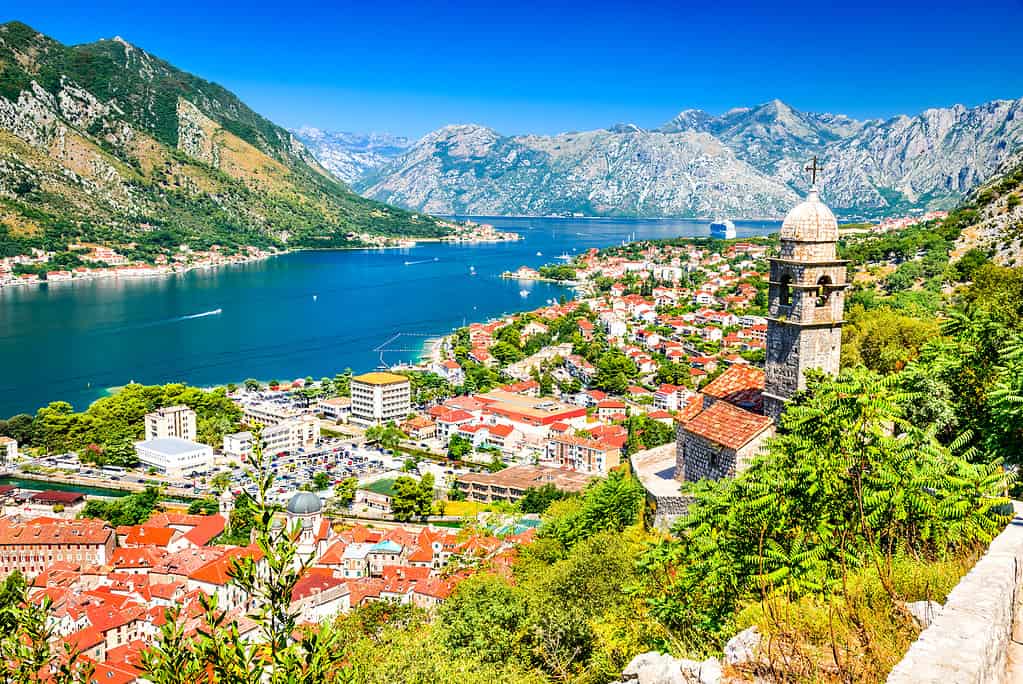
Montenegro has plenty of rugged terrain.
©emicristea/iStock via Getty Images
The capital city of Montenegro is Podgorica, which covers 10.4 percent of the entire Montenegro territory and is home to almost a third of the population. It has been a NATO member since 2017 and is negotiating European Union membership. Its geography includes high peaks and coastal plains. Montenegro also contains some of the most rugged mountain terrain in Europe and five national parks. The economy is mainly service-based, and it has no ethnic majority, although Montenegrins make up around 45 percent of the population. The official language is Montenegrin, and Eastern Orthodox Christianity is the main religion.
North Macedonia
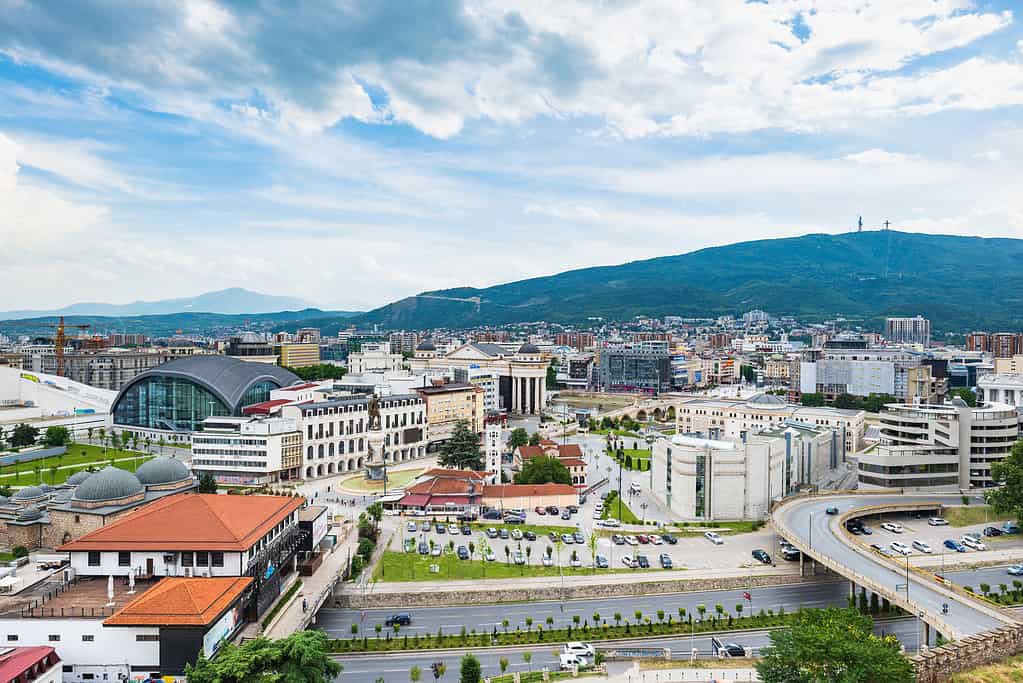
The largest city in North Macedonia is Skopje.
©uskarp/iStock via Getty Images
Skopje, the capital of the Republic of North Macedonia, is the largest city in the country and home to a quarter of the 1.83 million population. The country covers 9,928 square miles and is mostly rugged, with large lakes and the Vardar River valley. There are four national parks within the territory with an abundance of animals, including bears and wolves. The country has an open trading economy exporting chemical products and machinery. Tourism also now plays a significant role. The largest ethnic group is the Macedonians, and Macedonian is the official language. Religion is dominated by Eastern Orthodox Christianity, particularly the Macedonian Orthodox Church.
Romania
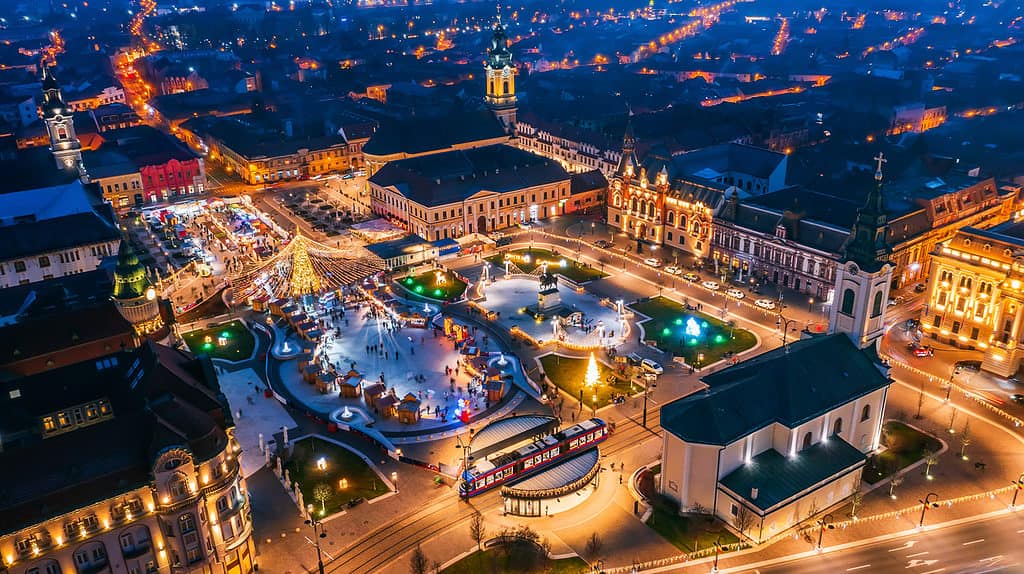
There is an expanding tourism industry in Romania.
©iStock.com/emicristea
Romania is the largest of the Balkan countries, covering 92,046 square miles. It is viewed as the crossroads of Central and Southeast Europe. Home to around 19 million people, it is the sixth most populous state of the European Union. The capital city is Bucharest, and there are a further 41 counties, each administered by a council. It is packed with forests, protected national parks, and the famous Danube River. In fact, it has one of the largest undisturbed forests in Europe, covering 27 percent of the country. The economy is based primarily on services, with industry and agriculture contributing. It is also a net exporter of electrical energy, and tourism is rising steadily. Romanian is the most widely spoken language and is the official language of the country but there is no state religion. However, Eastern Orthodox Christianity is the most widely practiced religion.
Serbia
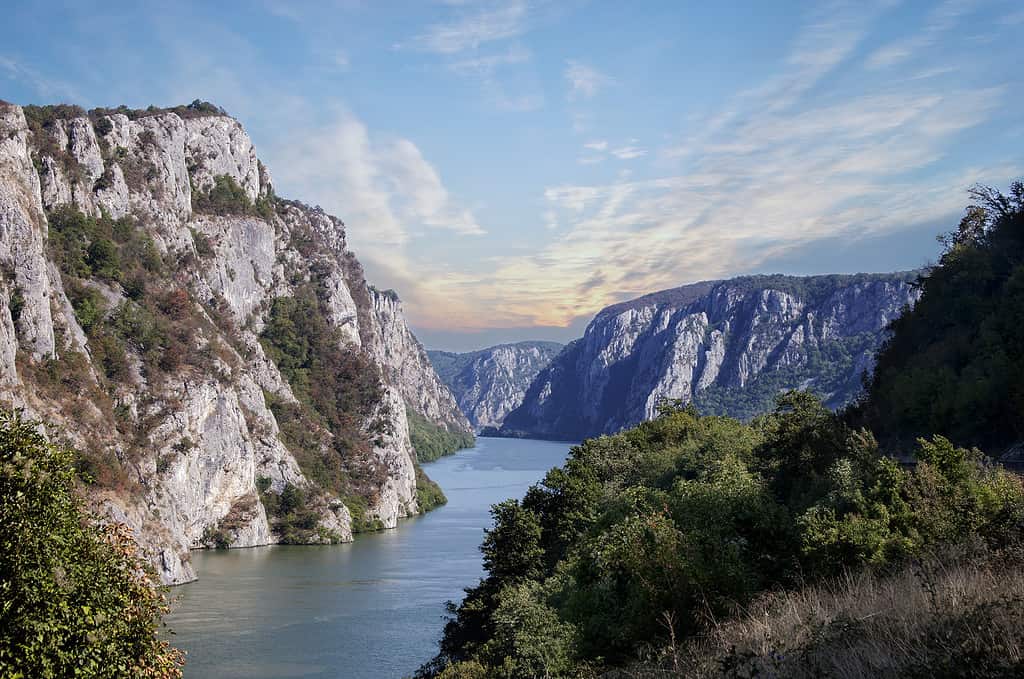
There are five national parks in Serbia.
©nikola19/iStock via Getty Images
Serbia is a landlocked Balkan country situated on the Pannonian Plain. Its population is around 6.6 million, of whom around 1.4 million live in the capital city, Belgrade. The northern third of the country is on the Pannonian Plain, but the central part is hilly with rivers. Mountains dominate the southern third. Biologically, the country is of huge importance and is home to over half of European fish fauna and 74 percent of European bird fauna. There are five national parks, and 6.4 percent of the country is protected. Serbs are the largest ethnic group, making up 81 percent of the population, and 88 percent of the population have Serbia as their native language. It is classed as an emerging market economy with a dominant service sector. Serbia is a secular state, although the Serbian Orthodox Church is the largest and traditional church in the country.
Slovenia

Most of Slovenia is hilly or mountainous.
©Structured Vision/Shutterstock.com
At the northwest of the Balkans lies Slovenia, which enjoys a short coastline with the Adriatic Sea. Most of its 7,827 square miles are made up of mountains and forests. The 2.1 million people who live there are distributed among the 212 municipalities. The capital city is Ljubljana, which is also the economic and cultural center of the country. The Alps dominate Northern Slovenia, and most of it is hilly or mountainous, and more than half of it is covered in forest. There are established mining, chemical, and service industries. The official language is Slovene – the native language of around 88 percent of the population. Around 70 percent of the population are Catholics.
The photo featured at the top of this post is © Ljupco/iStock via Getty Images
Thank you for reading! Have some feedback for us? Contact the AZ Animals editorial team.




